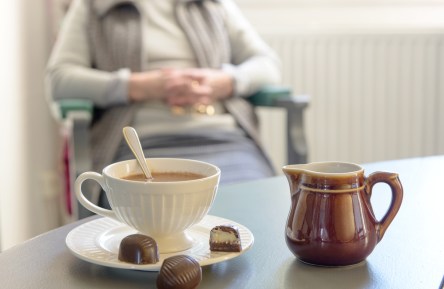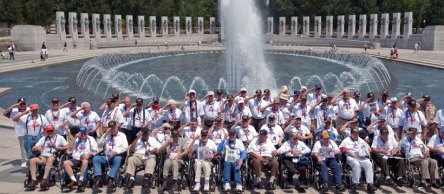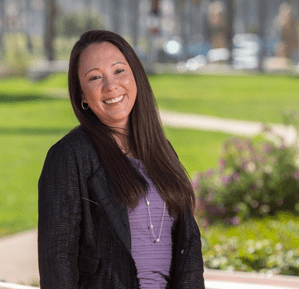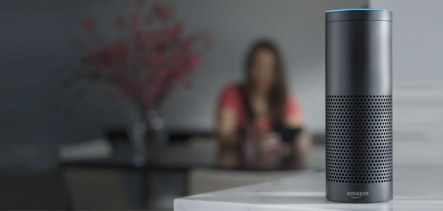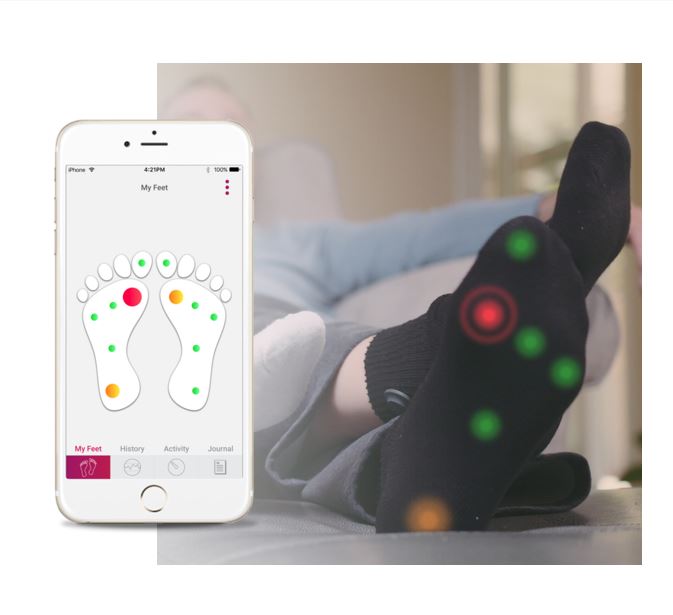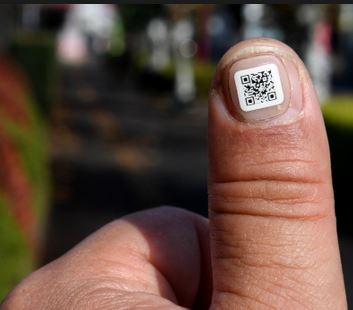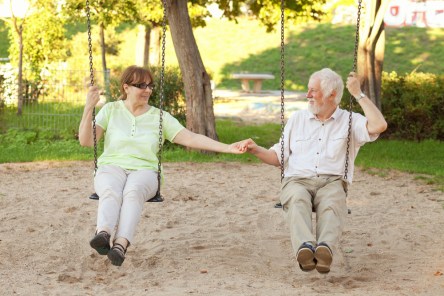In the aftermath of Hurricane’s Maria’s devastating impact on Puerto Rico, residents and staff at three senior living communities continue to face challenges, and find new sources of strength. A Yardi client in Puerto Rico shares their story. As Category 4 Maria hurtled towards Puerto Rico, three Insignia Senior Living communities initiated their disaster plan and began communicating with residents and family members. By the time the storm made landfall on September 20, its unprecedented strength meant even the best-laid plans called for some improvisation and cooperation on behalf of residents and staff. “No amount of preparation could have helped us anticipate all the challenges that we have been facing,” says Insignia Senior Living CEO Milton L. Cruz. “We have had to make a lot of adjustments to our plans, always using our best judgment.” A Continuing Crisis Though Hurricane Maria’s reign of terror ended weeks ago, the residents of Puerto Rico are still dealing with the aftermath of the storm’s impact. Over 80 percent of the island is still without power, and according to FEMA, residents are currently coping with low medicine supplies and a daily shortfall of 1.8 million meals. For Cruz and the residents who depend on him, the continuing crisis in Puerto Rico – especially the lack of dependable power – poses life-threatening risks. “While Hurricane Maria made landfall weeks ago, we are still facing the aftermath today as strongly as we did the day after the storm,” he says. “This isn’t over, and it will take months, if not years, to rebuild the island.” “This was a truly catastrophic event, and we will need a lot of help and support from our fellow US citizens.” Staff Saves the Day Though the precautions and protocols established by Insignia’s Puerto Rico...
Rebel Retirees
Senior Perspectives
As Ferris Bueller famously advised, “Life moves pretty fast. If you don’t stop and look around once in a while, you could miss it.” For many older adults, the bells and whistles of the modern age continue to befuddle and frustrate, but as reporter Jane Morice suggests, seniors are adapting to this new world in some surprising ways. While technological advances may leave some older adults confused and cautious, many senior citizens are embracing an active, modern approach to aging. “The sharpest contrast between generations in 2017 is inarguably the comprehension of technology,” she writes before adding, “They’re not all old fogies in rocking chairs, watching the world go by.” Complicated Connections Social media and smart phones continue to flummox many older adults, despite apps and devices continue to simplify their user interface. While most grandparents have discovered the joys of Facebook, Instagram and Twitter remain mostly out of reach. In fact, according to Pew Research Center, 62% of adults over 65 have a Facebook profile, while less than 20% on Instagram and only 9% on Snapchat. Though most seniors now own smart phones (about 40%), few use them to their full potential. As the Pew Research Center discovered, some of that reticence isn’t merely stubbornness, as “older adults may also face physical challenges that might make it difficult to use or manipulate devices.” Online shopping also remains out of reach for many seniors, most of whom continue to feel a sense of discomfort with automation and online activities. Baby boomers as a group appear the most comfortable with online shopping, while only 10% of the older crowd purchases items on the internet. Some of that doubt seems well-founded, considering the Department of Homeland Security estimates seniors “defrauded over the Internet” at twice the rate of...
Cultural Concerns
Aging Demographics
Expected to command a significant portion of America’s aging population over the next several decades, the nation’s aging Hispanic population will usher in a new era of cultural needs and expectations. That’s according to a new study commissioned by the Associated Press-NORC Center for Public Affairs Research. After surveying older Hispanics on their attitudes and expectations regarding assisted living and senior housing, researchers concluded Hispanics might “face additional obstacles in getting culturally competent care.” “…49 percent of older Hispanics have already faced language or cultural barriers as they navigate the health care system,” state the report’s authors. “These barriers have resulted in additional stress, delays in getting care, increased time and effort, not getting needed care and higher than expected costs for care.” Respect and Value Expressing feelings of frustration, loneliness and confusion, the survey’s participants expressed concern over the ability of their local health care providers to meet their specific needs. Specifically, respondents reported difficulty communicating with doctors and nurses due to language and cultural barriers. For those experiencing difficulty overcoming these challenges, two-thirds said they experienced additional stress and delays related to receiving adequate medical care. Unfortunately, less than half of the Hispanics surveyed expressed confidence in their local health care facilities and nursing homes’ ability to meet the needs of senior residents. Even fewer respondents felt home health aides and assisted living communities are up to the challenge, with only 20 percent of participants conveying they felt assured of the capabilities of their local home senior health providers. Complex Communications With almost 3 out of 4 Hispanics speaking Spanish in the home, the language barrier remains the foremost barrier to adequate senior care. According to the survey, a little more than a third of respondents reported speaking English “less than ‘very...
Prescription Chocolate...
Senior Health
Cocoa flavonoids could be the key to fighting age-related mental decline and improving cognitive function in older adults. For years, doctors and scientists have been on the lookout for a magic pill, some daily dose able to fight age-related cognitive decline and potentially stop dementia in its tracks. While Mary Poppins counseled a spoonful of sugar to cure most ills, the real nutritional superstar may actually be chocolate. According to a recent article published in Frontiers in Nutrition, cocoa flavonoids- one of the main ingredients in your typical candy bar, could enhance human cognition. “Through a variety of direct and indirect biological actions, in part, still speculative, cocoa and cocoa-derived food have been suggested to possess the potential to counteract cognitive decline and sustain cognitive abilities, particularly among patients at risk,” explain the study’s authors. “Although still at a preliminary stage, research investigating the relations between cocoa and cognition shows dose-dependent improvements in general cognition, attention, processing speed, and working memory.” A Recipe for Healthy Brains Chocolate’s potential to positively impact cognitive function derives from the cocoa flavonoids influence on cardiovascular function as well as its potential as a neuromodulator. In addition to flavonoids, chocolate also contains other “functional ingredients,” including methyl xanthine caffeine and theobromine, which paired together can also positively influence neurocognitive function. “Moreover, cocoa flavanols…exert a protective role on cognitive performance and cardiovascular function specifically impaired by sleep loss, in healthy subjects,” write the study’s authors. “Together, these findings converge at pointing to cocoa as a new interesting nutraceutical tool to protect human cognition and counteract different types of cognitive decline, thus encouraging further investigations.” Sweetening the Golden Years The study’s authors also delve into the possibility regular chocolate consumption could be beneficial for older adults. In addition to protecting cognitive...
Building Bridges
Memory Care
Recently recognized as a Dementia Capable Society Leader by Dementia Care Specialists, Florida-based senior living provider The Arbor Company has announced the introduction of its Bridges memory care program at the company’s Barrington Terrace senior living community in Fort Myers. The Arbor Company began expanding its dementia care services last year with specialized training for its care providers via webinars and in-person classroom instruction. Decrying the standard, “one-size-fits-all” approach to most memory care issues, the company’s Bridges program is meant to provide a more tailored solution. The program’s three “neighborhoods” cover the range of memory care needs, from assisted living to early stage dementia, with customized 24-hour support. At the assisted living level, residents receive minimal to comprehensive care based on their needs and lifestyles and designed to grow as those needs change. At the Bridges level, a “high-sensory, purposeful environment” groups residents based on similar stages of memory loss for less isolation and a more comfortable living environment. At the final stage, the Evergreen neighborhood includes 24-hour support and care based on “the latest dementia research.” “The services and programs Barrington Terrace offers its residents are beyond compare,” Laura Ellen Christian, The Arbor Company’s Vice President of Engagement and Training said in a statement. “We are excited to introduce the Bridges concept to Fort Myers and to the families who will benefit from our unique philosophy of memory care.” In addition to individualized care programs based on a resident’s specific needs, the Bridges program also provides counseling and support for family members. With the goal of making memory care affordable and effective, the Bridges program at Barrington Terrace gives residents access to the latest in dementia care in a warm, inviting environment. “Our new neighborhoods at Barrington Terrace make an immediate impact upon families who...
Virtual Veterans
Senior Tech
With the help of virtual reality, aging veterans unable to travel can get up close and personal with far-flung war memorials. As the clock strikes 11:11am on Veterans Day, the sun aligns perfectly with the Anthem Veterans Memorial in Anthem Arizona. At the appointed hour, beams of light are funneled through the monument, casting a solar spotlight over The Great Seal of the United States. Surrounded by bricks inscribed with the names of over 750 servicemen, for that one moment the seal glows on the ground, gleaming up from the shadows cast by the shrine’s five marble pillars. While thousands of visitors make the trek each year to watch the transformation live, for many aging veterans the trip is not an option. Failing health and lack of finances make travel prohibitive for many seniors. Thankfully, advances in virtual reality can now help housebound adults explore the world from the comfort of their armchair. “They can be feet away from them again, in full glory, and feel like they’re there with them,” says Sarah Hill, the co-founder of Honor Everywhere, a nonprofit organization to helping veterans see the memorials erected in their honor – either in person or via virtual reality. Losing History The average age of US soldiers during the Vietnam War was 22, and so many of that war’s former combatants are currently nearing retirement age. In addition, in the last 14 years, Vietnam veterans are dying at a rate of 390 per year. For World War II era veterans the numbers are even more staggering: 500 deaths a day and with the US Department of Veterans Affairs estimating that only 620,000 of the 16 million servicemen and women were still alive in 2016. With an average age of 92, most of the...
Reducing Turnover
Senior Staffing
As the senior living industry continues searching for solutions to ongoing workforce shortages and rampant burnout, software solutions like Yardi Voyager can simplify tasks and increase employee satisfaction. Finding and keeping the right employees remains an ongoing challenge for senior living providers. In fact, according to research firm Holleran, after a fairly short “honeymoon period” of one year, worker engagement begins to decline, leading employees to seek out new opportunities and resulting in a 42% average turnover rate for life plan communities. These losses translate into real money: The average cost of turnover per employee can be up to 50% of that employee’s salary, with true turnover costs for registered nursing hovering above $65,000 per employee. “Turnover in our industry’s been pretty high,” admits Angela Kennedy, Senior Accountant for Commonwealth Assisted Living. “Just being able to recruit and retain top talent is challenging.” “Our People Set Us Apart” With a set of core values focused on helping seniors “age with dignity,” Commonwealth Assisted Living operates 23 communities throughout Virginia. Founded in 2002 by Richard J. Brewer, the company values leadership from within and strives to create an atmosphere of teamwork and transparency. As one of the largest providers of independent living, assisted living and memory care in the state, Commonwealth cares for over 1,500 residents. “Our people set us apart from other providers,” says Brewer, “We work hard, and are not afraid to do things differently.” The centralized recordkeeping, customized menus and easy to relevant records available through Yardi Voyager® Senior Housing allows Commonwealth staffers to do their jobs much for effectively, but that’s not the only benefit. According to Angela, the simplified data entry system and streamlined record keeping also help employees feel more engaged by freeing them from mundane, repetitive tasks so they...
Voice Activated
Senior Living Technology
Sitting silently in the corner, Amazon’s Alexa awaits the next command, ready to place online orders, adjust indoor temperatures or even provide a weather update. For senior citizens, the ability to manage a variety of tasks through voice command can help bolster independent living and provide caregivers with the ability to remotely monitor the health and safety of older patients. Whether used in the home or at a senior living facility, voice technology has the potential to modernize and personalize senior healthcare. Specialized Software As part of the Internet of Things (IoT), voice recognition technology has entered the mainstream, with more and more households are adding computerized personal assistants. As the hardware becomes ubiquitous, opportunities to add software specialized for seniors abound. For companies keeping an eye on their bottom line, the ability to add voice-command technology software to existing hardware allows a senior living facility to upgrade services without needing to upgrade current infrastructure. Even multiple operating systems can be navigated with ease, with most emerging software applications designed to be compatible with everything from Apple’s Siri to Amazon and Google home. “I believe the future of senior-related technology is customizing existing products through software,” says Laurie Orlov, the founder of Aging in Place Technology Watch, a market research firm that provides thought leadership and analysis on senior care technology. “We aren’t going to see senior living products that have their own hardware succeed [because] they can’t scale. Without the product being able to scale, you can’t make it work.” Virtual Caregivers For older adults, maintaining routines is essential, especially when it comes to medication management and other health-related tasks. While the plastic pill containers labeled with the days of the week can help keep seniors on track, the ability to preprogram voice-enabled...
Bilingual Brains
Dementia Prevention
Over 60 percent of the world’s population is bilingual, and it’s long been known the capacity to understand two or more languages can help older adults maintain healthy brain function and stave off dementia.. With more than 5 million Americans living with Alzheimer’s, the ability to speak two or more languages isn’t just a party trick… it can be a lifesaver. A 2013 study published in Neurology determined bilingualism could delay onset of dementia by almost 5 years. The study’s authors discovered the bilingual benefit occurs regardless of education, sex or even literacy.Moreover, because bilingual brains are accustomed to understanding more than one language, they are well equipped to manage degeneration and neuron loss by utilizing alternative ways to function. “After years of daily practice managing interference between two languages, bilinguals become experts at selecting relevant information and ignoring information that can distract from a task,” explains Dr. Ana Inés Ansaldo, a researcher at the Centre de recherche de l’Institut Universitaire de gériatrie de Montréal. “In this case, bilinguals showed higher connectivity between visual processing areas located at the back of the brain,” she writes in summary of her research on the differences in brain function between bilingual and monolingual seniors. “Data indicate[s] that the bilingual brain is more efficient and economical, as it recruits fewer regions and only specialized regions.” Multilingual Multitasking Dr. Ansaldo’s research identified two cognitive benefits associated with bilingualism. While monolingual seniors use diverse brain areas when completing cognitive tasks, bilingual adults save resources through centralized and specialized functional connections. Additionally, when completing cognitive tasks bilingual seniors use less of the brain’s frontal regions, which are more vulnerable to aging. Dr. Ansaldo theorizes these benefits are what allow bilingual seniors to stave off dementia and other signs of cognitive aging. “We...
Silver Screen Seniors...
Oscar Ageism
The limelight may favor the young, but as Hollywood strives for inclusivity, a recent study entitled “Over Sixty, Underestimated: A Look at Aging on the ‘Silver’ Screen,” reveals senior citizens are woefully underrepresented on the big screen. With the Terminator eligible for social security, and Die Hard’s Jon McClane just a few years shy of retirement, it might be time for filmmakers to expand their character demographics. Nevertheless, according to the study, a joint effort between Humana and USC’s Annenberg School, though senior citizens make up almost one-fifth of ticket buyers, only 11.8% of film characters over the last two years have been over the age of 60. “This underrepresentation is unfortunate,” says Dr. Stacy Smith, Associate Professor at USC’s Annenberg School for Communication and Journalism and co-author of the study. “Aging is one of those areas where exposure to stereotypes can initiate negative cognitions, and those negative cognitions can have negative health effects.” “It seems important to take this [exclusion] just as seriously, if not more so, than some of the other groups that are included in the inclusion conversation.” Cartoons and Action Figures Hollywood film producer Gary Lucchesi, who participated in a recent panel on the topic, lays some of the blame on lack of opportunity. Last year’s top ten films included four animated films, five superhero movies, and another entry into the Star Wars canon. Not much room for dramatic turns by some of the industry’s seasoned professionals. While perennial Oscar nominees like Meryl Streep and Denzel Washington managed to nab some meaty rolls, many older performers are left scrambling for work. “We’re not getting a lot of investment in traditional dramatic stories,” says Lucchesi. “When you have that as a reality, you’re obviously going to have [a situation] where the...
Smart Socks
Wearable Tech
The wearables trend shows no signs of abating, and for older adults suffering from chronic diseases like diabetes, a simple “smart sock” could be a lifesaver. For sufferers of both type 1 and type 2 diabetes, foot issues abound, from swelling to numbness and tingling in the toes. Unfortunately, because of the nerve damage triggered by the disease, some foot injuries go unchecked, leading to painful and dangerous complications, including infection and amputation. For older adults, these types of issues are all too common, which is why Siren Care’s Siren Smart Sock could be a game changer. “Diabetic foot ulcers are serious problem,” says Podiatric Surgeon Alexander M. Reyzelman, Co-Director for the UCSF Center for Limb Preservation, in a video about the Siren Sock. “1.5 million patients will develop foot ulcers in the United States, and 20% will develop amputations,” he warns, “and 50-70% will go on to lose their life within five years.” A Different Kind of Wearable While fitness trackers and smart watches grab the spotlight, a quiet revolution is afoot. The number of wearables designed for medical use is growing every day, especially in the senior care market. For the 11.8 million senior citizens suffering from diabetes, using test strips and blood pricks can be complicated. Because self-monitoring can be difficult for older adults, specially designed wearables can help with compliance and improve overall health by flagging small issues before they become a big crisis. Be it socks or wristbands, the simplicity of the system is one of the main advantages. “…it is simply not possible to design a device that meets the expectations of a millennial while being operable by an octogenarian,” explains Thor Schrock, developer of the Allen Band, a wristband that helps detects falls. “The most important thing to...
Senior Living Trends
Great Expectations for 2017
As the year begins and a new administration takes office, senior housing providers are gearing up for change. While a certain amount of anxiety is to be expected, according to George Yedinak from Senior Housing News, many of the developments that will take place over the next twelve months merely build upon preexisting circumstances. “While operators, owners, and others will be reacting to possibly dramatic changes,” he writes, “some senior living issues that have been top of mind for years show no signs of abating.” Occupancy and Oversupply According to the National Investment Center for Seniors Housing and Care, nursing home occupancy remained flat through the end of 2016 even as the number of units in development continued to rise. That trend will likely continue across all types of senior care well into 2017. With the pool of potential residents unable to match supply, even well-established providers may find themselves “protecting their turf.” “New supply could affect everything from rents to marketing budgets and wages,” writes Yedinak. “Developers looking to build, or buyers on the hunt for good opportunities, will feel even more pressure to judge the supply-demand forces in a given market.” Although consumer purchasing power has steadily increased over the last year, increasing pressure from new supply will undermine rent escalation. As a result, says Yedinak, any rent increases in competitive markets will likely hover around two to three percent rather than the standard three to four percent. “Getting rents right will be even more of a balancing act than usual in 2017,” he warns, adding that operators should be aware of the “steady drumbeat within the industry to cease discounting altogether and increase pricing transparency, to meet consumer expectations.” Staffing Shortfalls For the last few years, workforce woes have plagued senior...
Dementia Tags
Dementia Care
As a dementia crisis looms, one Japanese city has ditched GPS locators and other wearable devices in favor of low-tech stickers for tracking elderly patients. While dementia locators have been around for a couple of years, a new system developed in Japan aims to fix some of the issues inherent t wearable tracking devices. Ditching pendants and pocket GPS trackers, a company in Iruma, Japan has developed a QR-code tagging system for dementia patients. Beyond the ID Tag Typical medical ID bracelets and patient wristbands still serve an important function, but anything wearable can be damaged or lost. Because dementia patients are often incapable of supplying basic information about their identity, the ability to affix a permanent identifier has become increasingly important. While microchips may seem like an obvious solution, without the tools to read an implanted device any subcutaneous identifier has limited utility. Similarly, GPS trackers must often be within range of satellite or mobile service to be useful. As a result, there’s a growing need for a practical, low-cost and easily managed solution. The one-centimeter QR stickers recently deployed in Iruma are water resistant and designed to last up to two weeks. They can be affixed to a fingernail or toenail, and can be read by any free QR code mobile app. The code itself includes a unique identifier, along with the name, telephone number and address of the patient. The service, which is free, was just launched in November of this year to positive response. “There are already ID stickers for clothes or shoes, but dementia patients are not always wearing those items,” a Japanese official explained to AFP news. “Being able to attach the seals on nails is a great advantage.” A Crisis Point The World Health Organization estimates some 36...
Young at Heart
Senior Playgrounds
Forget sitting on a bench feeding pigeons; these days older adults are ditching the breadcrumbs for senior-friendly playgrounds. We all know bodies at rest tend to stay at rest, and for older adults, physical activity can be particularly challenging. Fitness experts often counsel that the exercise is whatever is comfortable and convenient. And what could be easier than a spending some time on the playground? That’s certainly the notion behind senior citizen playgrounds. By putting the “fun” back in fitness, these next-generation playgrounds are designed to appeal to all ages. “These playgrounds allow us to promote healthy living in cities across the country,” Humana President and CEO Bruce Broussard recently explained. “It’s important to us to make it easy for people to achieve their best health – kids and adults alike.” Play Time They’re calling it the “playability” movement: communities working to create safe spaces for families to have fun and stay active. In support of the cause, KaBOOM! has created the Playful City USA initiative with help from the Humana foundation. “We are proud to partner with Humana to help give all children the childhood they deserve. We are confident that, together, we can help families make healthy, playful choices that build a new generation of ‘Healthy People,’” said Darell Hammond, CEO and Founder of KaBOOM! “Play matters – not just as an activity for children, but as a foundation for lifelong well-being and strong communities.” Let’s Get Physical In Europe and Asia, playgrounds for senior citizens provide low-impact exercise equipment to help older adults safely raise their heart rate. These parks often include elliptical machines, static bikes and other body flexor equipment for enhanced balance and flexibility. “We wanted to break the myth of the old person coming to the park and...
Watch Works
Wearable for Seniors
With its user-friendly interface and advanced health and safety features, the Apple Watch Series 2 may be the perfect wearable for senior citizens. While wireless earbuds, dual cameras and the death of the audio jack dominated the post-game analysis of Apple’s 2016 Keynote, the Apple Watch updates demonstrate the genuine potential of today’s wearable technology, especially for senior citizens. While the first Apple Watch proved a bit of a disappointment, the Series 2 raises the bar with enhanced functionality and modern design. Combined with an updated watchOS and a slew of new apps, the Apple Watch Series 2 provides health and safety options perfectly attuned to the needs of today’s aging population. Safe and Sound The original Apple Watch arrived with plenty of choices for security-minded users. Over the last year, developers have been hard at work designing emergency alert apps. Dialing 911 during an emergency may seem relatively straightforward, but apps like HelpAround provide a sort of panic button that notifies authorities and a list of designated contacts when activated. Now the watch itself makes it even easier to reach out during a catastrophe. Pressing and holding the side button activates the watch’s SOS function, placing an immediate call to 911. The watch then automatically sends a message to designated contacts with location information and a map. After the call, the watch itself will display medical ID information, including age and allergies and other important information. The flashiest Apple Watch upgrades announced at the keynote include waterproofing and a new ceramic body almost impervious to the dents and scratches that plague most wearable devices. In terms of safety and security, but the device’s built-in GPS is what really shines. By incorporating the watchOS maps, the Series 2 can also display routes and maps...




